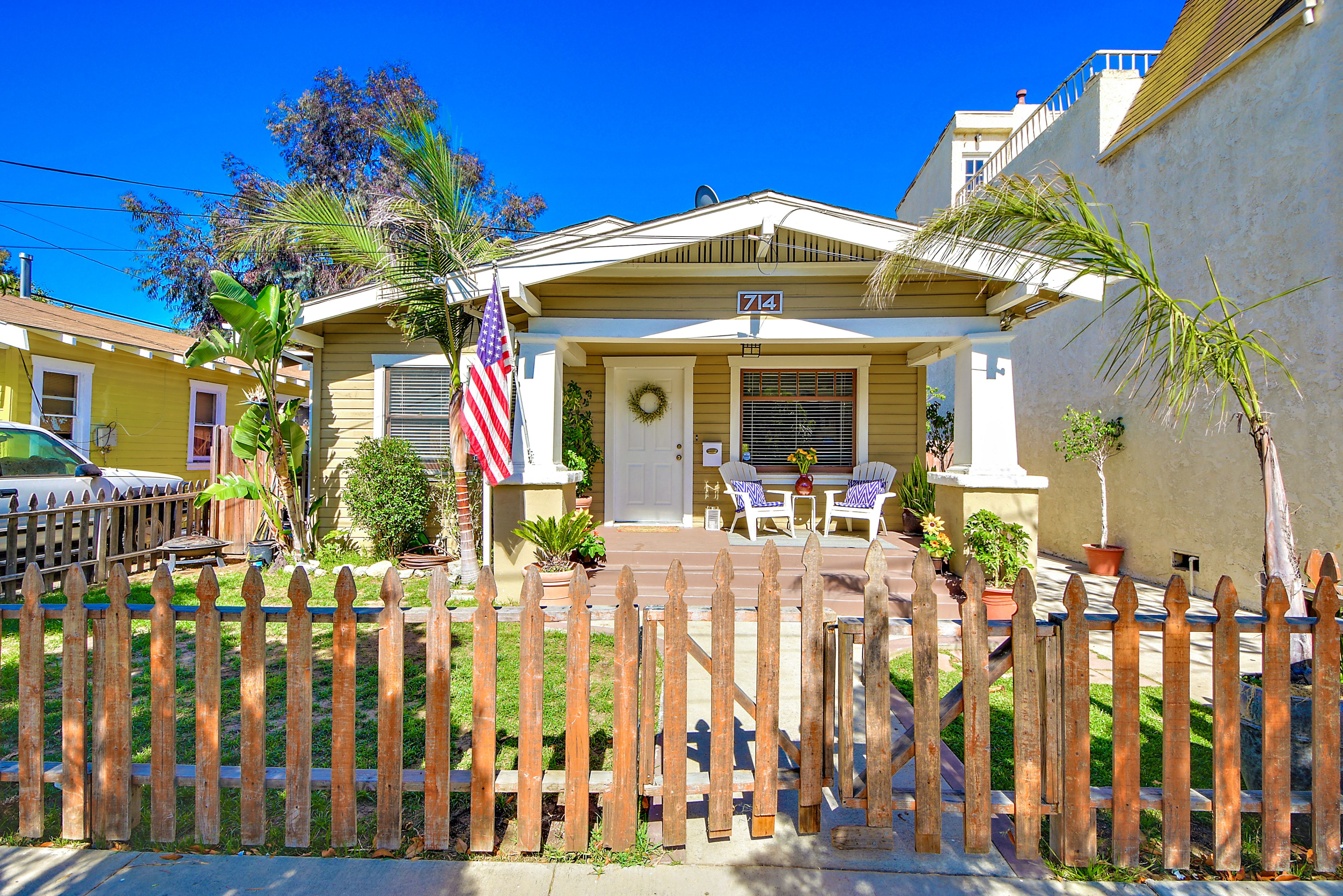What is a Reverse Mortgage?
In simple terms, a reverse mortgage allows homeowners to take part of their home equity and convert it into payments to themselves.With a regular mortgage, you pay the lender every month to buy a home over time. But with a reverse mortgage, you get a loan where the lender pays you. This is a financing option for qualifying homeowners age 62 and above.
There are three types of reverse mortgages:
- Single-purpose reverse mortgages: offered by some state and local government agencies or non-profits
- Proprietary reverse mortgages: private loans
- Federally insured reverse mortgages: also known as home equity conversion mortgages (HECMs)
HECMs account for 90% of all reverse mortgages in the United States. Read on for more information on them.
How It Works
In a traditional mortgage, the homeowner makes monthly payments to a lender. But with a reverse mortgage, it’s the opposite. The lender makes payments to the homeowner. In a reverse mortgage, you still own your home, but it’s used as collateral. The amount of the mortgage is mostly based on the equity you’ve accumulated in your property over the years. Home equity is the difference between your home’s appraised value and the existing mortgages you have on the property. For many senior homeowners, their equity represents a major portion of their net worth. Reverse mortgages make it possible to tap into this net worth and use it as part of their retirement income.
Why Some People Get a Reverse Mortgage
Homeowners, or borrowers, must live in the house as a primary residence in order to qualify for a reverse mortgage. There are several payment options the borrower may choose from, and these options are listed below. Most of these options have adjustable interest rates. With reverse mortgage payments, borrowers are virtually free to use the money as they wish.
Many use it as a source of income during retirement. Others may use it to pay off existing mortgages, renovate the house, or take care of unexpected expenses. There are no monthly payments required by the borrower during the duration of the reverse mortgage. Instead, the interest and loan balance becomes due only when the borrower moves to another permanent residence, sells the home, or dies.
Although no interest payments need to be made during the term of the reverse mortgage, there are some other requirements. The homeowner is still responsible for paying property taxes, homeowners’ insurance, and any other obligations, as well as maintain the property. Failure to do any of these with a reverse mortgage can result in the foreclosure of the home. In addition, if you stop living in the home for longer than one year (even if it is because of living in a long-term care facility or for medical reasons), it breaks the terms and conditions of the mortgage. At that point, you are required to repay the loan balance in full.
Who Guarantees the Mortgage
Reverse mortgages are insured by the Federal Housing Administration (FHA). They guarantee the homeowner will receive all the payments they are entitled to. It also protects the homeowner from ever owing more on the loan than the home is worth. The money received by the reverse mortgage is not taxable. It is considered a loan advance by the IRS. The amount you are able to receive is determined by several factors. These include the value of your home, your age, age of your spouse, the amount due on your existing mortgage, and the interest rate.
Receiving Payments
When you take out a reverse mortgage, there are several ways you can choose to receive your payment. The majority come with adjustable interest rates because they involve multiple payments over a period of time and interest rates change.
- Lump Sum: With this option, you receive all of your proceeds at once when the loan closes. This is also the only option that comes with a fixed interest rate since it is the only one with a single payment. This comes with a catch though. As of October 2013, there is a cap on how much can be taken out with a reverse mortgage within the first year. It’s generally 60%.
- Term Payments: With this payment option, the lender gives the borrower equal monthly payments over a set period of time. The period of the time is the borrower’s choosing.
- Equal Monthly Payments (Annuity): Similar to the term payments, this option also involves equal monthly payments. The difference, however, is that these monthly payments come for as long as at least one borrower lives in the home as a primary residence.
- Line of Credit: With this option, money is available for the homeowner to borrow as needed. What’s more, the homeowner only accrues interest on the amounts borrowed from the credit line. Not on all that is available.
In addition to these four options, borrowers also have the ability to combine two payment options together. So they could choose Equal Monthly Payments plus Line of Credit, or Term Payments plus Line of Credit.
Qualifications and Eligibility
You may qualify for a reverse mortgage if you meet the following criteria:
- Age: You are 62 years of age or older. However, spouses of borrowers who are under 62 years at the time of origination still retain the protections of the loan if the older spouse dies.
- Residence: You own your home and use it as a primary residence. This includes single-family homes, multi-family (up to 4 units), or is an approved condominium or manufactured home.
- Existing Debt: You only have a small amount left to pay on your existing mortgage, or have already paid off the home completely.
- State of the Home: Your home is in good condition prior to taking out the loan. You also must have significant equity in your home, at least 50%, to qualify.
All prospective borrowers must also attend a counseling session and undergo a financial assessment to qualify. The financial assessment is used to determine the borrower’s ability to pay for various expenses like property taxes, homeowner’s insurance, HOA fees (if applicable), and basic home maintenance. The counseling session, required by the Department of Housing and Urban Development, gives borrowers all the information needed to make the decision on taking out a reverse mortgage. It covers all the basics of how the mortgage works, as well as the pros and cons of taking out the mortgage based on personal and financial circumstances.
When Payment is Due
Payment on a reverse mortgage becomes due when the borrower lives somewhere other than the house for more than one year, sells the home, or dies. In some cases, it may also become due if the homeowner fails to keep up with property taxes or fails to maintain the home. When one of these occasions arise, the borrower or heirs of the estate have several options to settle the payment. They can:
- Pay off the existing balance of the reverse mortgage and keep the home.
- Sell the home and keep the remaining equity after the loan balance is paid.
- Allow the lender to sell the home, and the remaining equity is given to the borrower or heirs.
If the borrower has died, the heirs are allowed six months to repay the loan or sell the home in order to settle the debt – whichever they decide.
When Not to Get a Reverse Mortgage
Reverse mortgages sound like a no-brainer to a lot of senior homeowners. But don’t jump the gun too quickly. There are several instances where a reverse mortgage may not be your best option.
-
Potential Threat to Heirs’ Inheritance
- In most cases, when a reverse mortgage needs to be paid off, the only way to do so is to sell the home. If this occurs and the house sells for more than the outstanding loan balance, the heirs get to keep the profit. However, if the house sells for less than the outstanding balance, the heirs receive nothing. If the house is left to heirs, but they don’t have the funds to settle the loan, or they don’t qualify for a regular mortgage that can cover the outstanding reverse mortgage balance and help with ownership, the home will be taken as collateral and sold.
-
Shared Living
- If you live with relatives, friends, or roommates, their living situation could be at risk if they are not on the loan paperwork. If the borrower dies or lives out of the home for more than a year, the other occupants may be forced to vacate the home, as the loan payment would immediately become due.
-
Potential Move
- If you are considering moving, for medical or personal reasons, taking out a reverse mortgage may be an unwise decision. There are many upfront costs that come with taking out a reverse mortgage. These include lender fees, insurance costs, home appraisal fees, and more. In addition, borrowers who vacate or sell the property only have six months to repay the loan. Taking out a reverse mortgage in this situation is usually economically impractical. If you are willing to sell your home and downsize to a smaller property, that is usually the quickest and easiest way to safely access your home equity and provide a place for you to live.
-
Medical Bills
- Using reverse mortgage payments to pay off medical bills may seem like a good idea. But medical issues often affect your ability to maintain and keep your primary residence. Borrowers whose health declines to the point of having to be moved to a treatment facility run the risk of the home no longer being the primary residence. Remember, living in a treatment facility or nursing home for more than 12 months means the borrower no longer lives in the home as a primary residence. At that point, the mortgage payment would be due.
-
Can’t Afford It
- There are numerous upfront costs of taking out a reverse mortgage, but that’s not all. Depending on the situation, reverse mortgage payments may not be enough to cover property taxes, homeowners’ insurance, and home maintenance costs. If you cannot keep up with any of these requirements, the reverse mortgage loan becomes due in full. Failure to do so and you may lose your home altogether.
Let’s Recap
Reverse mortgages can allow homeowners 62 and older to convert their home equity into cash income. This is a great option for some people, but they can also be tricky and aren’t beneficial for everyone. You need to make sure you have considered all the factors in order to make a well-educated decision about applying. And like with any loans, be sure to shop around and compare prices with several different lenders so you can find the reverse mortgage that is perfect for you.
Next Steps
If you need help finding a lender or need advice, please fill out the form below. We’d be happy to point you in the direction of someone who can help. If you decide selling your home or downsizing is the right option, we’d love to help! Please fill out the form below and in the meantime, here are some articles on selling your home right now.
- Is Now the Right Time to Sell?
- How Home Value is Calculated
- How You Can Pay For A Renovation After You Sell Your Home
- Safely Sell Your Home During COVID-19
- What to Update if You Plan on Selling Your Home



Leave a Reply